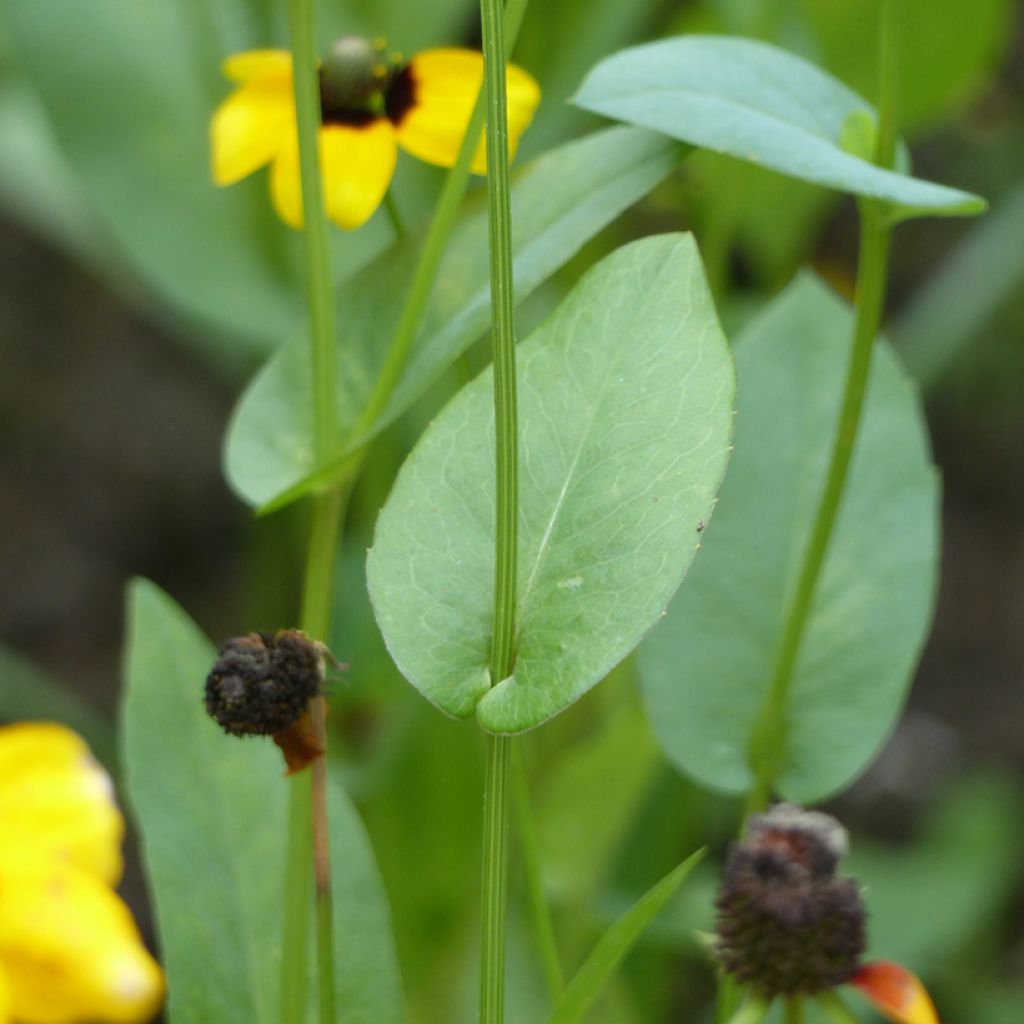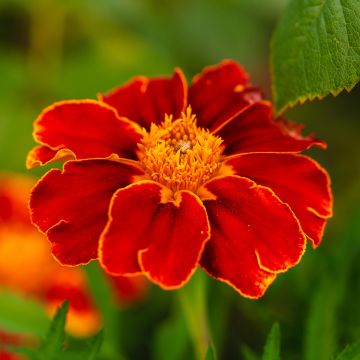

Clasping coneflower Seeds - Rudbeckia amplexicaulis


Clasping coneflower Seeds - Rudbeckia amplexicaulis


Clasping coneflower Seeds - Rudbeckia amplexicaulis
Clasping coneflower Seeds - Rudbeckia amplexicaulis
Rudbeckia amplexicaulis
Clasping Coneflower
Special offer!
Receive a €20 voucher for any order over €90 (excluding delivery costs, credit notes, and plastic-free options)!
1- Add your favorite plants to your cart.
2- Once you have reached €90, confirm your order (you can even choose the delivery date!).
3- As soon as your order is shipped, you will receive an email containing your voucher code, valid for 3 months (90 days).
Your voucher is unique and can only be used once, for any order with a minimum value of €20, excluding delivery costs.
Can be combined with other current offers, non-divisible and non-refundable.
Home or relay delivery (depending on size and destination)
Schedule delivery date,
and select date in basket
This plant carries a 6 months recovery warranty
More information
We guarantee the quality of our plants for a full growing cycle, and will replace at our expense any plant that fails to recover under normal climatic and planting conditions.
Would this plant suit my garden?
Set up your Plantfit profile →
Description
Rudbeckia amplexicaulis, sometimes called Dracopis amplexicaulis or Clasping Coneflower, is an ephemeral perennial that is cultivated as an annual or biennial. It is easy to grow and will not last more than 2 to 3 years because it is vulnerable to frost, especially in humid conditions.
Rudbeckia amplexicaulis is a medium-sized plant (45/60 cm) recognizable by its unique sombrero-shaped flowers.
The foliage consists of a mound of blue-green, toothed, lanceolate, 5 to 10 cm long basal leaves, from which sturdy, branched flower stems grow. The stems bear narrower, rather oval-shaped cauline leaves.
The flowers of Rudbeckia amplexicaulis are large solitary daisies (pseudanthia) with a prominent black centre and yellow drooping corolla. The long petals are regularly arranged around the centre of the flower which reaches a diameter varying from 5 to 7 cm. The large number of flowers which renew themselves continuously from July to September, form a remarkable blooming mass among other perennials and annuals. This flowerbed is a source of fresh flowers for making bouquets.
At the end of summer, the yellow and orange petals fade and fall, while the cone-shaped centre of the flowers dries and mummifies. Here again the flowers can be picked and incorporated into a dried flower bouquet.
Clasping Coneflower likes warm and sunny situations. In terms of soil, it prefers a rich, moist and most importantly, well-drained soil.
Ecological benefit : All summer long, the melliferous flowers of the Rudbeckias attract pollinating insects and butterflies to your garden. This is a good way to improve the ecosystem of your garden and to promote the production of fruit and vegetables in your vegetable garden. In autumn, you will be able to admire the incessant ballet of birds that come to feed on the mature seeds they find in the heart of the dried flowers.
Report an error about the product description
Clasping coneflower Seeds - Rudbeckia amplexicaulis in pictures




Flowering
Foliage
Plant habit
Botanical data
Rudbeckia
amplexicaulis
Asteraceae
Clasping Coneflower
Cultivar or hybrid
Other Thompson and Morgan seeds
View all →Planting and care
Before sowing Rudbeckia, place your seeds in the vegetable drawer of your refrigerator for 4 weeks. This will lift the dormancy of the seed and thus improve the success of your sowing.
Sow Rudbeckia amplexicaulis from February to March in a tray. Use a good quality soil and sieve the surface so that the seed will bind to the growing medium. Before sowing, lightly tamp down the soil with a small plank of wood. Broadcast your seeds. Cover the seeds by sprinkling topsoil or vermiculite on top, tamp down lightly and water generously with a fine spray. Place your tray in the light, without direct sunlight, at a temperature of 15°c to 20°c.
Seed emergence will take 30 to 120 days. As soon as the seedlings can be handled, transplant them into 7 cm pots. Keep the soil moist but not waterlogged during growth. Then, 15 days before finally placing them in their final positions, begin to acclimatize them gradually to temperatures close to those outside.
At the end of May, beginning of June, the temperature in the garden will be warm enough to planting out your young plants. Choose a site with plenty of sunshine. Add a good shovelful of compost to each planting hole. Space your plants 30 cm apart.
Regularly remove faded flowers to maintain the plant’s beauty and encourage the renewal of blooms.
Sowing period
Intended location
This item has not been reviewed yet - be the first to leave a review about it.
Haven't found what you were looking for?
Hardiness is the lowest winter temperature a plant can endure without suffering serious damage or even dying. However, hardiness is affected by location (a sheltered area, such as a patio), protection (winter cover) and soil type (hardiness is improved by well-drained soil).

Photo Sharing Terms & Conditions
In order to encourage gardeners to interact and share their experiences, Promesse de fleurs offers various media enabling content to be uploaded onto its Site - in particular via the ‘Photo sharing’ module.
The User agrees to refrain from:
- Posting any content that is illegal, prejudicial, insulting, racist, inciteful to hatred, revisionist, contrary to public decency, that infringes on privacy or on the privacy rights of third parties, in particular the publicity rights of persons and goods, intellectual property rights, or the right to privacy.
- Submitting content on behalf of a third party;
- Impersonate the identity of a third party and/or publish any personal information about a third party;
In general, the User undertakes to refrain from any unethical behaviour.
All Content (in particular text, comments, files, images, photos, videos, creative works, etc.), which may be subject to property or intellectual property rights, image or other private rights, shall remain the property of the User, subject to the limited rights granted by the terms of the licence granted by Promesse de fleurs as stated below. Users are at liberty to publish or not to publish such Content on the Site, notably via the ‘Photo Sharing’ facility, and accept that this Content shall be made public and freely accessible, notably on the Internet.
Users further acknowledge, undertake to have ,and guarantee that they hold all necessary rights and permissions to publish such material on the Site, in particular with regard to the legislation in force pertaining to any privacy, property, intellectual property, image, or contractual rights, or rights of any other nature. By publishing such Content on the Site, Users acknowledge accepting full liability as publishers of the Content within the meaning of the law, and grant Promesse de fleurs, free of charge, an inclusive, worldwide licence for the said Content for the entire duration of its publication, including all reproduction, representation, up/downloading, displaying, performing, transmission, and storage rights.
Users also grant permission for their name to be linked to the Content and accept that this link may not always be made available.
By engaging in posting material, Users consent to their Content becoming automatically accessible on the Internet, in particular on other sites and/or blogs and/or web pages of the Promesse de fleurs site, including in particular social pages and the Promesse de fleurs catalogue.
Users may secure the removal of entrusted content free of charge by issuing a simple request via our contact form.
The flowering period indicated on our website applies to countries and regions located in USDA zone 8 (France, the United Kingdom, Ireland, the Netherlands, etc.)
It will vary according to where you live:
- In zones 9 to 10 (Italy, Spain, Greece, etc.), flowering will occur about 2 to 4 weeks earlier.
- In zones 6 to 7 (Germany, Poland, Slovenia, and lower mountainous regions), flowering will be delayed by 2 to 3 weeks.
- In zone 5 (Central Europe, Scandinavia), blooming will be delayed by 3 to 5 weeks.
In temperate climates, pruning of spring-flowering shrubs (forsythia, spireas, etc.) should be done just after flowering.
Pruning of summer-flowering shrubs (Indian Lilac, Perovskia, etc.) can be done in winter or spring.
In cold regions as well as with frost-sensitive plants, avoid pruning too early when severe frosts may still occur.
The planting period indicated on our website applies to countries and regions located in USDA zone 8 (France, United Kingdom, Ireland, Netherlands).
It will vary according to where you live:
- In Mediterranean zones (Marseille, Madrid, Milan, etc.), autumn and winter are the best planting periods.
- In continental zones (Strasbourg, Munich, Vienna, etc.), delay planting by 2 to 3 weeks in spring and bring it forward by 2 to 4 weeks in autumn.
- In mountainous regions (the Alps, Pyrenees, Carpathians, etc.), it is best to plant in late spring (May-June) or late summer (August-September).
The harvesting period indicated on our website applies to countries and regions in USDA zone 8 (France, England, Ireland, the Netherlands).
In colder areas (Scandinavia, Poland, Austria...) fruit and vegetable harvests are likely to be delayed by 3-4 weeks.
In warmer areas (Italy, Spain, Greece, etc.), harvesting will probably take place earlier, depending on weather conditions.
The sowing periods indicated on our website apply to countries and regions within USDA Zone 8 (France, UK, Ireland, Netherlands).
In colder areas (Scandinavia, Poland, Austria...), delay any outdoor sowing by 3-4 weeks, or sow under glass.
In warmer climes (Italy, Spain, Greece, etc.), bring outdoor sowing forward by a few weeks.











































